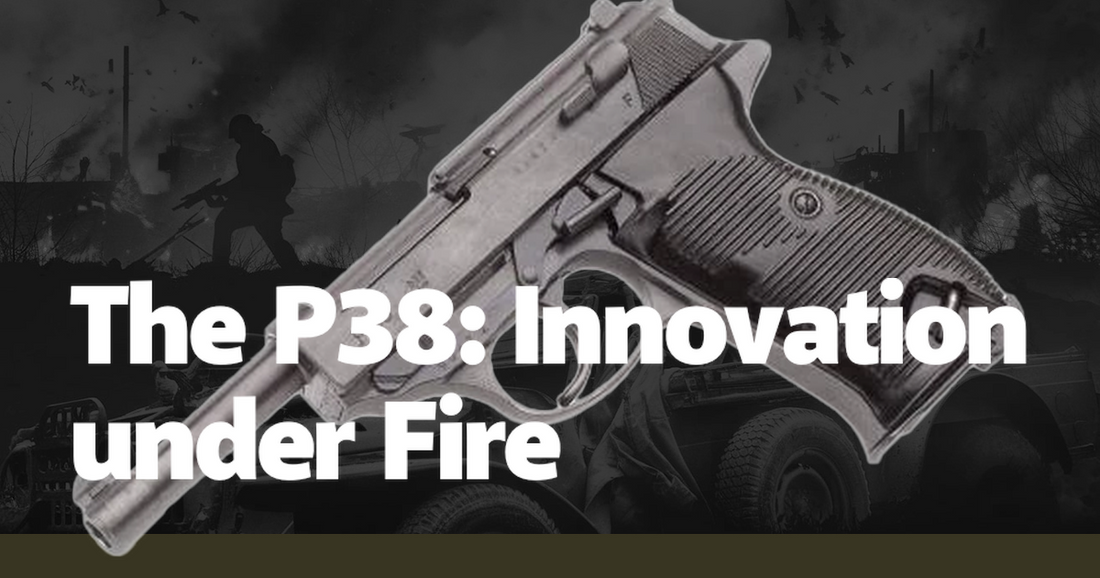In the annals of military history, few weapons symbolize innovation under duress as vividly as the Walther P38. Conceived in the crucible of World War II, the P38 emerged from a pressing need for a reliable, cost-effective sidearm for the German Wehrmacht. The design process began in the late 1930s, with the German military seeking to replace the aging Luger P08. The Luger, while iconic, was expensive to produce and prone to mechanical issues. The P38, designed by Carl Walther, was intended to address these shortcomings, embodying a blend of technological advancement and pragmatic engineering. Its development under the pressures of impending war is a testament to human ingenuity in times of crisis.
The P38 was groundbreaking in several ways. One of its most notable features was its double-action/single-action (DA/SA) trigger mechanism, a significant departure from the single-action only triggers of its predecessors. This innovation allowed soldiers to carry the pistol with a round chambered, hammer down, and safely engage targets by simply pulling the trigger. This mechanism not only enhanced safety but also improved the pistol's readiness, a crucial factor in the heat of battle. The DA/SA system has since become a standard in modern handguns, underscoring the P38's lasting influence on firearm design.
Another key innovation was the P38's use of a locked-breech, short-recoil operating system with a falling locking block. This system, inspired by the earlier Walther P36 prototype, provided greater reliability and durability under combat conditions. The design ensured that the pistol could handle the powerful 9mm Parabellum cartridge, which was standard issue for German forces. The P38’s robustness was further enhanced by its all-steel construction, which, although heavier than later polymer-framed pistols, provided a reassuring solidity and durability that soldiers appreciated in the field.
The P38's impact extended beyond its technical specifications. Anecdotal evidence from the front lines paints a picture of a weapon that was both revered and feared. German soldiers valued the P38 for its reliability and ease of use, often citing its performance in harsh conditions where other firearms faltered. Stories abound of P38s continuing to function in the mud and grime of the Eastern Front, where temperatures could plummet to bone-chilling lows. Conversely, Allied forces who captured P38s frequently chose to use them over their own sidearms, a testament to the weapon's superior design and functionality.
The P38 was not without its flaws, however. Early models suffered from issues such as brittle firing pins and weak magazine springs, which could lead to malfunctions. These problems were gradually addressed through ongoing modifications and improvements, but they highlighted the challenges of producing a new weapon under wartime conditions. Despite these setbacks, the P38 remained a formidable sidearm throughout the conflict, and its production continued until the war's end. Over 1.2 million units were produced, a testament to its importance and effectiveness.
Post-war, the P38's legacy endured. The design principles it introduced influenced numerous subsequent firearms, including the Beretta 92 and the SIG Sauer P226, both of which adopted the DA/SA trigger mechanism and locking block system. The P38 itself saw continued use in various forms, notably as the P1 in the post-war German Bundeswehr. This version featured an aluminum frame to reduce weight, demonstrating the adaptability and enduring relevance of the original design. The P38's influence on modern firearms cannot be overstated, making it a cornerstone in the evolution of military sidearms.
The P38 also holds a significant place in popular culture, often depicted in films, literature, and video games set during World War II. Its distinctive profile and historical significance make it a favorite among collectors and enthusiasts. The weapon's presence in media serves to perpetuate its legacy, ensuring that new generations remain aware of its role in shaping the course of military history. The P38's blend of innovation, practicality, and reliability continues to captivate those with an interest in military technology and history.
In conclusion, the Walther P38 stands as a symbol of innovation under fire, a product of necessity that transcended its origins to leave a lasting impact on the world of firearms. Its development during one of history's most tumultuous periods showcases the ingenuity and resilience of those who designed and produced it. The P38's legacy is evident in the countless modern firearms that owe their existence to its pioneering features. As we reflect on the P38, we are reminded of the enduring human capacity to innovate, even in the face of overwhelming adversity.

